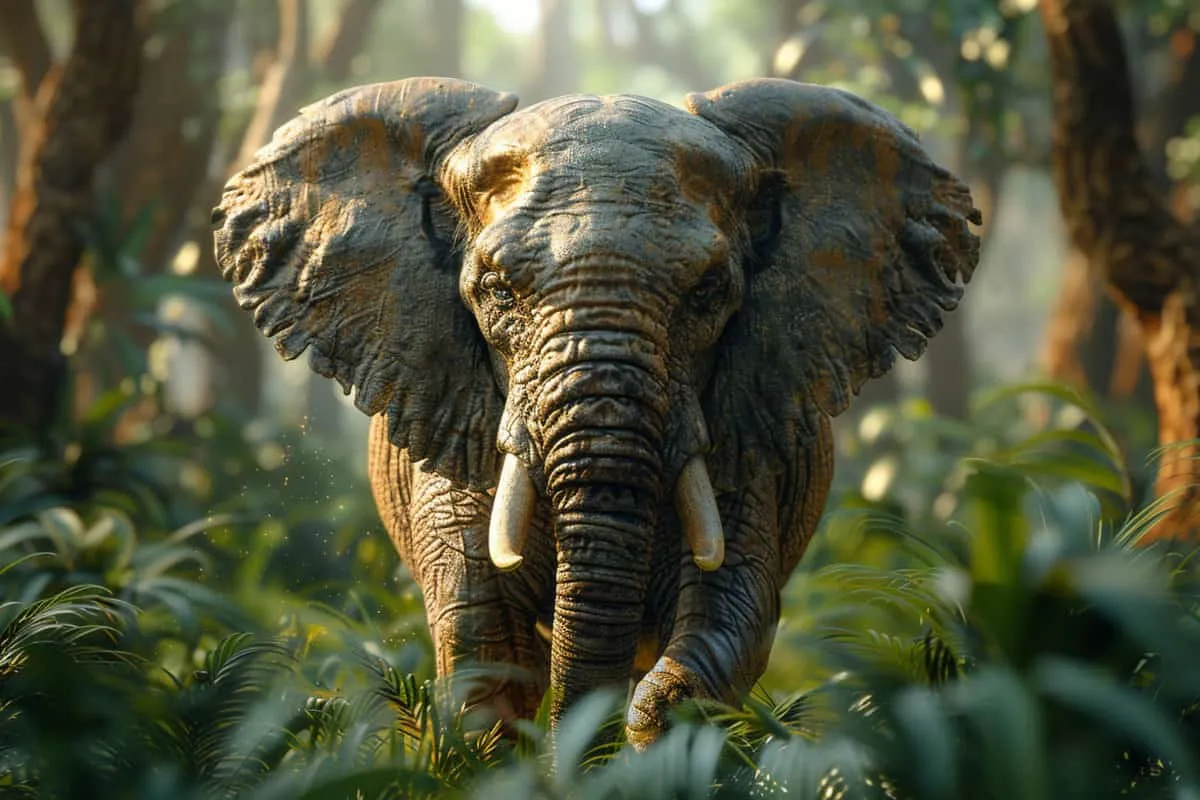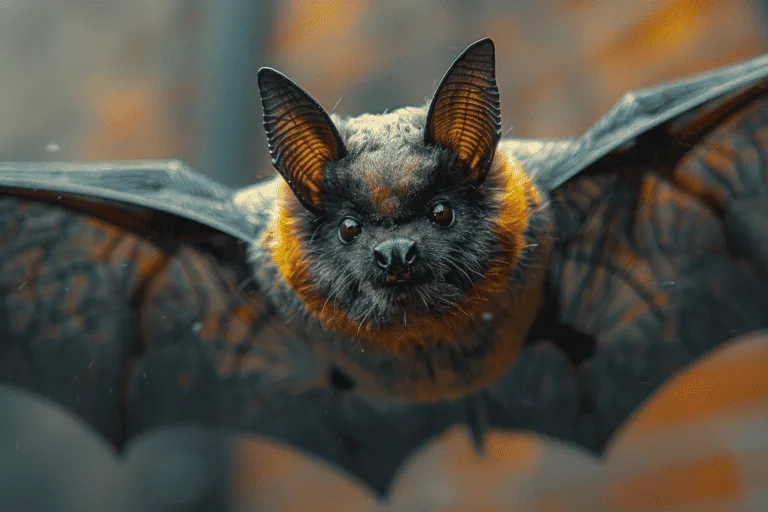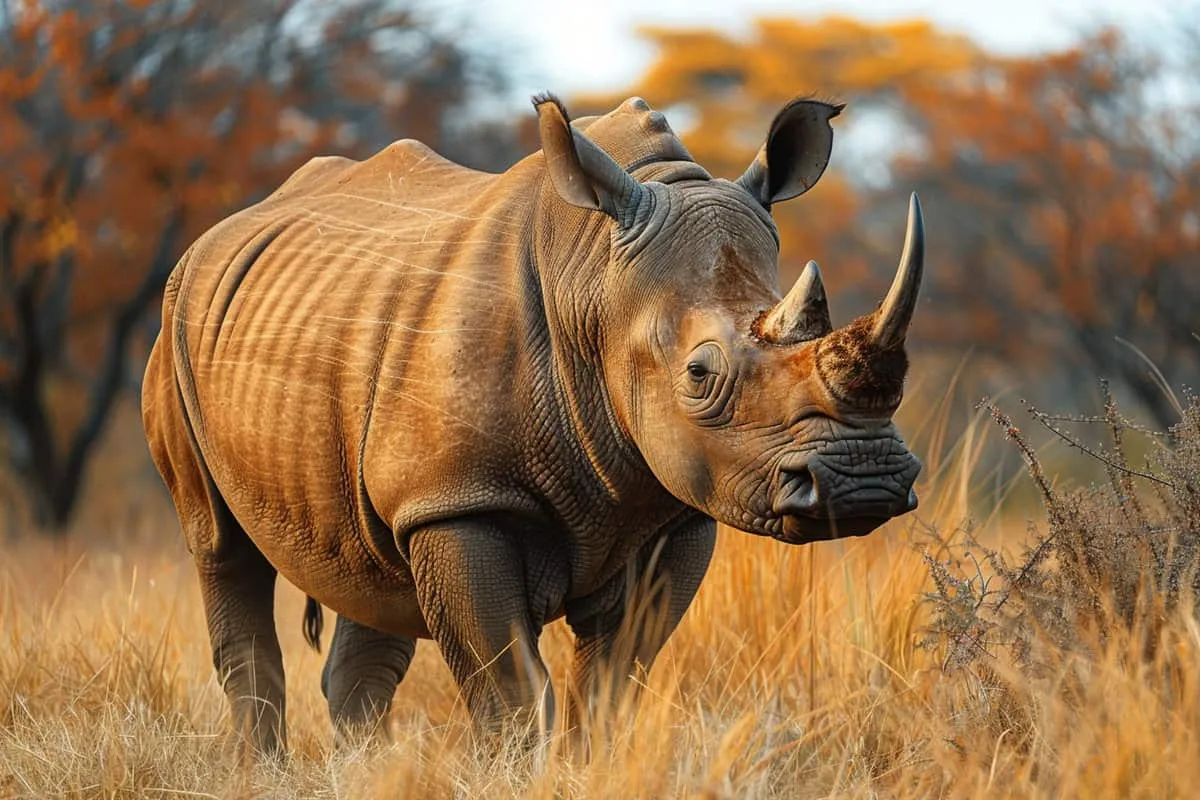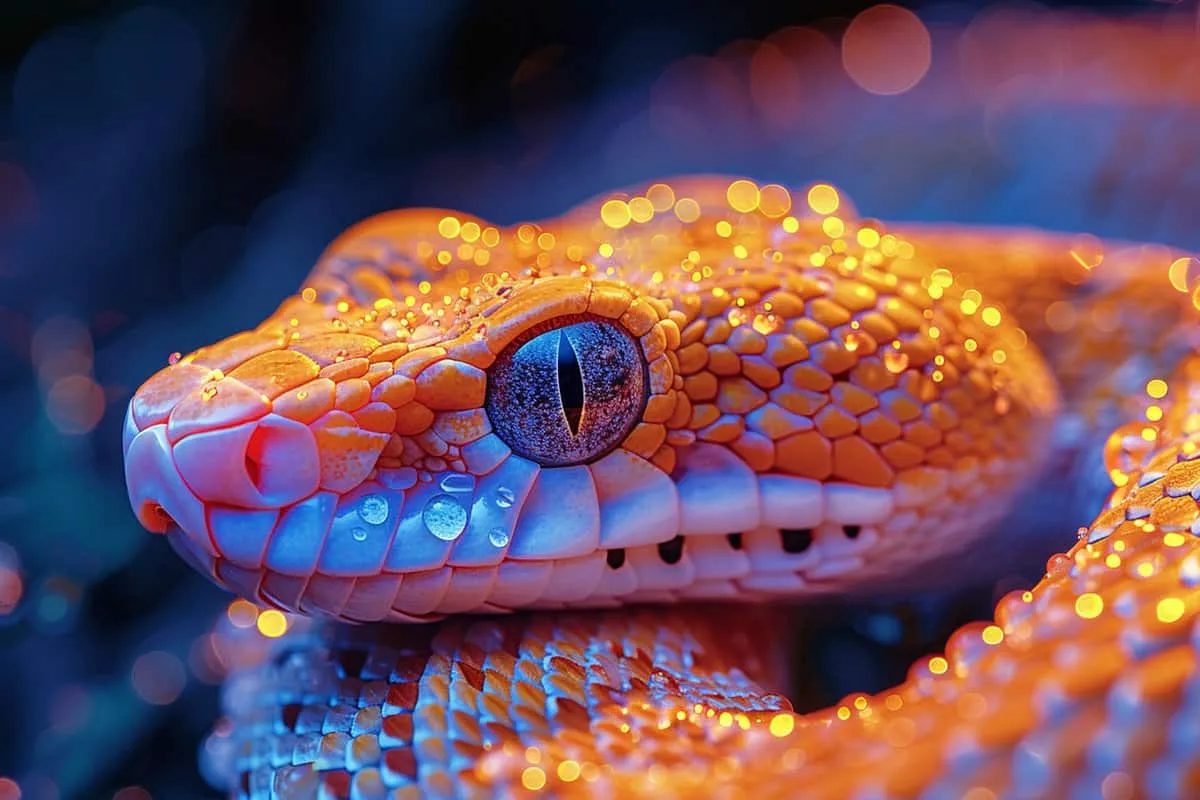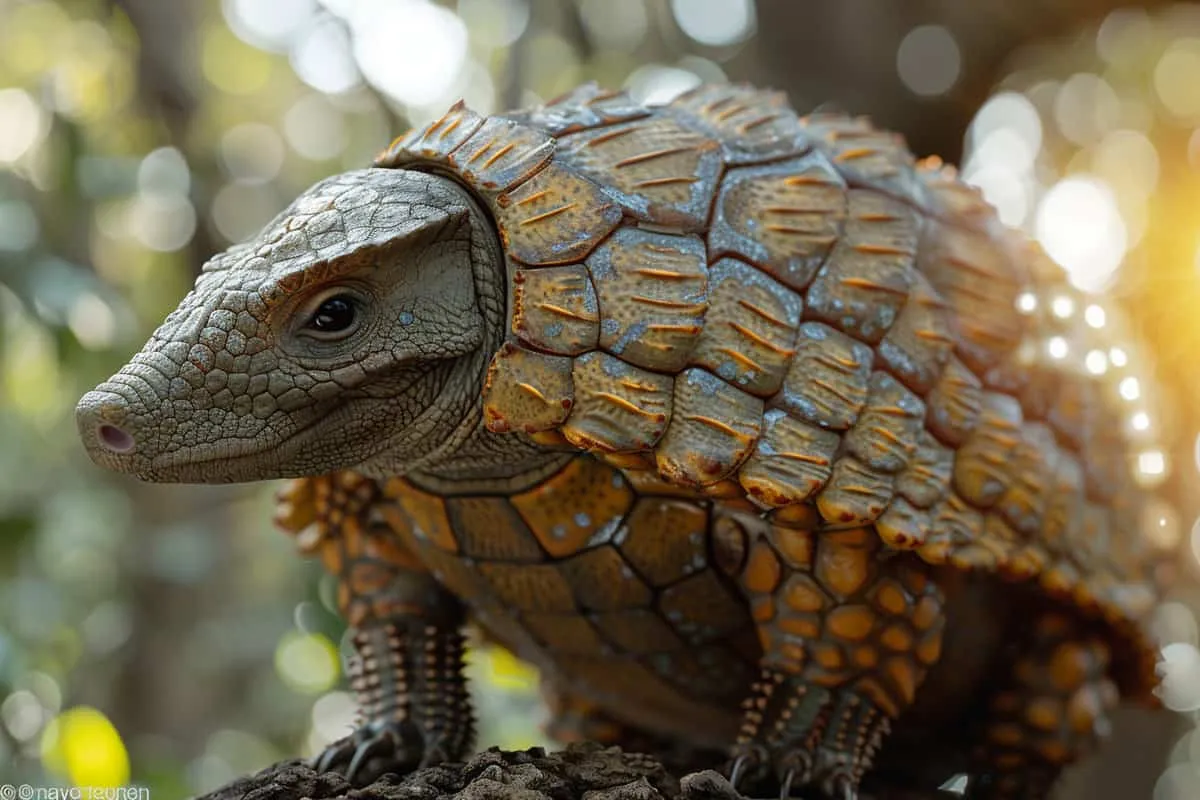10 Grass Facts (Epic Insights Into Earth’s Green Blanket)
Grass might seem like just the green stuff under your feet, but it’s way more interesting than you think. It covers our planet in ways we often overlook, from lawns to fields, playing a vital role in ecosystems around the world.
Imagine how different Earth would look and feel without it!
These facts about grass will blow your mind, showing you that there’s more to these green blades than meets the eye.
Ready for a deep dive into the world of grass? Scroll down for some jaw-dropping revelations about our top picks of unbelievable grass facts.

1. Grass is one of the Earth’s oldest living organisms.
Grass is way older than you might think. It’s been around for over 55 million years! That means grass was here even before the dinosaurs roamed the Earth.
Imagine, those giant creatures walking among these ancient plants.
This old age makes grass a key player in our planet’s ecosystem. Grasses are not just there to make your lawn look nice or give golf balls something to roll on. They have a much bigger job.
Grasses help stabilize soil with their root systems, preventing erosion and making sure the ground stays healthy for other plant life to thrive.
Moreover, grasses play a crucial role in supporting wildlife. Many animals depend on grasslands for food and shelter.
From tiny insects to large mammals like deer and elephants, grass ecosystems support a wide range of biodiversity.
But that’s not all; grass also contributes significantly to the air we breathe by producing oxygen through photosynthesis, just like trees do but on a smaller scale per plant yet massively collectively due to its abundance worldwide.
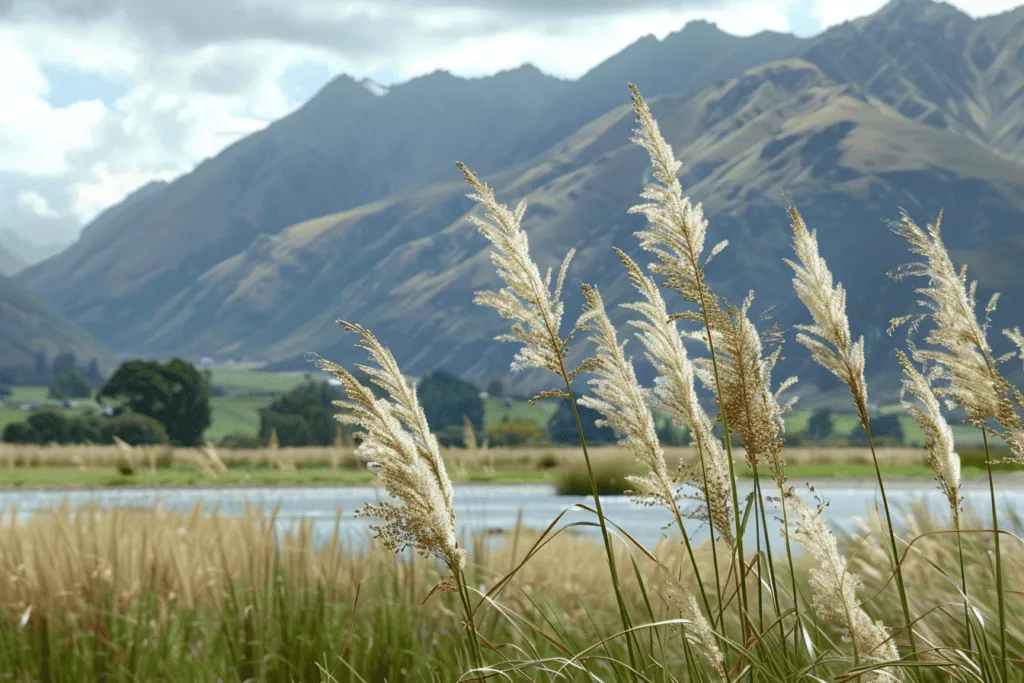
2. There are over 10,000 species of grass worldwide.
Imagine walking through a field and realizing that every blade of grass under your feet could be from one of over 10,000 different species!
This vast variety stretches across the globe, from the coldest polar regions to the warmest tropical ones.
Grass isn’t just what we see in our lawns or parks. It includes an incredibly diverse range of plants. Some are common sights in backyards, while others are exotic varieties found in unique climates around the world.
What makes grass so special is its adaptability. These plants have evolved to thrive in various environments.
Whether it’s a dry desert or a wet marshland, there’s likely a type of grass that calls it home.
This diversity isn’t just for show; it serves an essential purpose too. Many animals rely on different types of grass for food and shelter—making these plants key players in ecosystems everywhere.
From well-known lawn favorites to rare and unusual specimens, the world of grass is full of surprises waiting to be discovered by those willing to look closer.

3. Grasslands cover approximately 40% of the Earth’s land surface.
Grasslands are found on every continent except Antarctica, making them one of the most widespread ecosystems in the world.
These areas include diverse environments such as savannas, prairies, and steppes. Each type has its unique characteristics but all share a common ground: they are dominated by grasses.
Savannas, for example, mix trees with grasses and can be seen sprawling across Africa. Prairies are vast open spaces primarily in North America where tallgrass once flourished before farming took over much of this fertile ground. Steppes offer a more arid version found in parts of Eurasia.
These grassy areas play a crucial role not just as percent of Earth’s terrain but also as centres for biodiversity. They support numerous wildlife species that have adapted to live in these conditions—ranging from large mammals like bison and zebras to various bird species and countless insects.
Moreover, grasslands contribute significantly to local economies through activities such as grazing livestock and tourism.
However, they face threats from human activities including agriculture expansion and climate change which could impact their existence drastically if not managed properly.

4. Bamboo is the fastest-growing grass, with some species growing up to 91 cm (36 in) in 24 hours.
Bamboo isn’t just any grass; it’s a record-breaker, capable of shooting up to 91 cm (36 in) within just 24 hours.
Imagine waking up to find your garden bamboo noticeably taller than the day before!
This rapid growth allows bamboo to reach its full height in a single growing season. That’s like watching a plant superhero in action.
This super-speed growth isn’t just cool to watch; it makes bamboo incredibly useful. People around the world use it for all sorts of things:
- Building houses and bridges that are strong yet lightweight.
- Crafting furniture that’s both durable and stylish.
- Weaving textiles for clothes and other fabric goods.
What makes bamboo even more amazing is its sustainability. Because it grows so fast, we can harvest bamboo without running out quickly.
It’s kind of like having an endless supply of wood that doesn’t harm the planet.

5. Grass can absorb sound, making it a natural sound insulator.
Grass plays a big role in reducing noise pollution. This is especially helpful near busy streets or industrial areas where loud sounds are common.
By absorbing these sounds, grass helps create quieter and more peaceful outdoor spaces.
Imagine sitting in a park surrounded by lush, dense lawn. The thick grass underfoot not only feels nice but also keeps the area calm by soaking up unwanted noise from the surroundings.
This makes your time outside more enjoyable and relaxing.
Dense lawns are particularly effective at this job. The thicker and healthier the grass, the better it is at trapping and reducing noise levels.
This is why maintaining a well-kept lawn around your house or lot can contribute to creating a serene environment.
For homeowners looking to enhance their property’s quietness, investing in growing and maintaining dense grass coverage can be an effective strategy.
Not only does it beautify your space, but it also serves as a practical solution for minimizing disturbance from external noises.
6. Lawnmowers date back to 1830, invented by Edwin Budding in England.
Edwin Budding’s invention in 1830 of the lawnmower forever changed how we take care of gardens and sports fields.
Before this, keeping grass at a manageable height was a daunting task that required lots of manual labor.
Budding came up with the idea after seeing a machine in a cloth mill which used a cutting mechanism to trim the irregularities off the surface of woolen cloth.
This invention wasn’t just about making life easier for gardeners; it was initially designed with sports fields in mind.
Imagine trying to play cricket or golf on uneven, overgrown grass! The lawnmower made these games more enjoyable and accessible by ensuring well-maintained playing surfaces.
But its impact didn’t stop there. The lawnmower paved the way for modern landscaping techniques.
It allowed for creativity and precision in garden design that was previously impossible, giving rise to beautifully manicured lawns and intricate landscape patterns seen around homes and public spaces today.

7. Grass plays a crucial role in fighting climate change by capturing carbon dioxide.
Grass acts like a superhero for our planet, especially. It does this by acting as a carbon sink.
What this means is that grass absorbs more carbon dioxide (CO2) from the air than it releases. This process is vital because CO2 is one of the main gases responsible for warming our planet.
Besides sucking up CO2, grass also improves air quality. Thanks to chlorophyll, which gives plants their green color, grass converts CO2 and sunlight into food through photosynthesis.
During this process, it releases oxygen back into the atmosphere—enough oxygen, in fact, to support life on Earth.
But that’s not all; grass also plays an essential role in supporting biodiversity.
It provides habitats for numerous species of wildlife and insects which are crucial for maintaining healthy ecosystems. These ecosystems further contribute to the resilience of our environment against climate change impacts.
8. Wheat, corn, and rice are types of grass, providing the base for most of the world’s diets.
Wheat, corn, and rice might just look like simple plants. But did you know they’re actually types of grass? And not just any type—they’re the backbone for feeding billions of people around our planet.
These grains have been on dinner tables for thousands of years. Imagine farmers from long ago planting and harvesting these crops by hand. They knew something important: these grains were key to staying fed and healthy.
Why are they so crucial? Well, wheat makes bread and pasta; rice is a staple in dishes all over Asia; corn can be found in everything from tortillas to popcorn. They’re everywhere!
But it’s not just about being delicious or versatile. These grains are essential for global food security.
This means they help make sure everyone has enough to eat—no small task when we think about how many people live on Earth.
- Staple foods: Billions rely on them daily.
- Ancient crops: Cultivated over millennia.
- Food security: Vital in fighting hunger worldwide.

9. Grass has a symbiotic relationship with mycorrhizal fungi, enhancing nutrient absorption.
Grass and mycorrhizal fungi work together in a special way. This partnership is all about helping each other out.
The fungi get to have a home and food from the grass, and in return, they do some pretty cool things for the grass.
First off, these fungi are great at finding water. They can reach into parts of the soil that grass roots can’t get to.
This means even during dry times, your lawn could stay green because of these tiny helpers.
They also make the grass tougher against diseases.
Think of them as little bodyguards for each blade of grass, fighting off anything that tries to harm it. This keeps your lawn looking healthy without needing lots of chemicals.
In places where it’s hard for plants to grow because there aren’t many nutrients in the soil, these fungi come to the rescue again!
They grab onto nutrients far away and bring them back to their plant partner.
It’s like having a friend who always brings snacks when they come over.
10. The scent of freshly cut grass is actually a plant distress call.
When you mow your lawn and smell that fresh grass scent, you’re actually picking up on a chemical SOS.
Grass releases these chemicals to signal it’s been damaged. It’s like the plant’s way of shouting for help.
These signals aren’t just for show; they have a purpose. They attract predators that eat herbivores—those animals or insects munching on the plants.
So, in a way, the grass is trying to protect itself by calling in the cavalry.
What’s fascinating is how much humans love this smell.
We associate it with summer, freshness, and cleanliness without realizing it’s essentially a distress call.
This aroma has become so appealing that it’s often replicated in candles and air fresheners!
Frequently Asked Questions
How old is the organism we know as grass?
Grass has been around for a really long time, making it one of Earth’s oldest living organisms. It’s like the wise old sage of the plant kingdom.
Are there many types of grass?
Absolutely! There are over 10,000 species worldwide. Imagine trying to collect trading cards for each type – that would be quite the challenge!
How much of Earth is covered by grasslands?
Grasslands are pretty spacious, covering about 40% of our planet’s land surface. It’s like nature’s own sprawling green carpet.
Which grass grows the fastest and how quickly does it grow?
Bamboo holds the record here, shooting up to 91 cm (or roughly three feet) in just 24 hours. It’s like watching nature in fast-forward!
Can grass really help quiet things down?
Yes, it can! Grass acts as a natural sound insulator, absorbing noise and keeping things serene. Think of it as nature’s way of telling everyone to use their inside voices.
When did lawnmowers first make an appearance?
Lawnmowers debuted back in 1830 thanks to Edwin Budding from England. Before him, imagine having to trim your lawn with scissors!
Why is grass important in fighting climate change?
Grass plays a hero role by capturing carbon dioxide from our atmosphere. It’s like each blade is doing its part to give us cleaner air.


